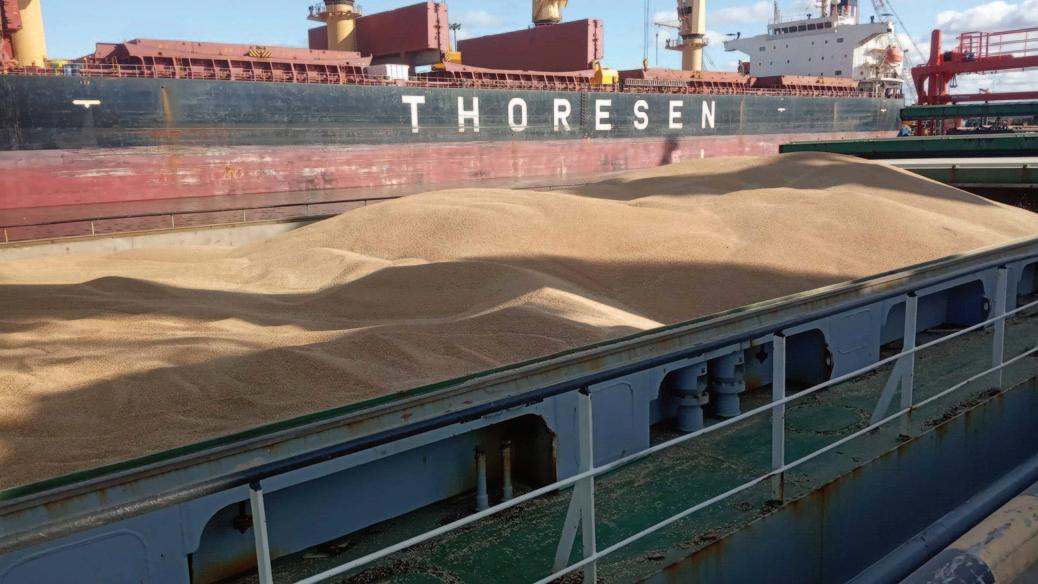
12 minute read
Rising acreage for corn and soyabeans improves feedstuffs outlook in 2023/24
The International Monetary Fund (IMF) predict global growth at 3% in both 2023 and 2024, the slowdown being concentrated in advanced economies, where growth will fall this year and 1.4% next year. The euro area, still reeling from last year’s sharp spike in gas prices caused by the war, is set to decelerate sharply. By contrast, growth in emerging markets and developing economies is still expected to pick-up with year-on-year growth to 4.1% this year and next. The average, masks significant differences between countries, emerging and developing, Asia growing strongly at 5.3% this year, while many commodity producers will suffer from a decline in export revenues. The IMF confirms that while stronger growth, lower inflation and some adverse risks have moderated, the balance remains tilted to the downside.
Global crop prices are expected to fall in 2023/24 as global supply improves on rising acreage for coarse grains and oilseeds with record output for corn and soybeans. Global wheat supply is forecast slightly lower in 2023/24. Increasing uncertainty around Black Sea exports following Russia's withdrawal from the Black Sea Grain Initiative, means global grain and oilseed prices are expected to experience further volatility in 2023/24.
Drought Curbs Wheat Yields In North America
The global wheat and coarse grain harvests
GLOBAL FEEDSTUFFS-PRODUCTION, USE, FEED & STOCKS 2022/23-2023/24 (MT)




are anticipated to rise by 47mt (million tonnes) to 2.28bn/t in 2023/24. Drought across the Canadian wheat belt is expected to cut spring wheat yields, reducing output to 31mt. Heat, dryness also featured across most of the US Southern Plains and in the EU 134mt, while heavy rains in key regions in China, dented yield prospects. The small reduction in the global wheat harvest is eclipsed by a substantial rise in coarse grains to over 1.49bn/t. Due mainly to an exceptional increase in the US corn crop, where increased acreage compensated for weather induced yield loss-large corn crops expected in Brazil and in Argentina; rising global output for sorghum and less barley. The global crop for oilseeds, is forecast to rise by 31mt to 661mt, including a large US soy crop with bumper crops anticipated for Brazil and Argentina.
FEED USE OF GRAINS AND OIL MEALS TO GROW IN 2023/24
Consumption of wheat and coarse grains to rise by 29mt to 2.28bn/t. Global wheat use at 796mt outstrips supply by 9mt — a small reduction for food/industry use 638mt and a 2mt increase for feed wheat to 158mt. Global coarse grains feed use is expected to grow by 21mt to 913mt with more corn, sorghum especially in China and less barley fed this year. Oilseed crushings are forecast to increase by 20mt to 541mt, underpinned by demand for food, renewable biofuels with feed use of oilmeals forecast to rise by 9mt to 357mt.
Rising Coarse Grain Imports To China
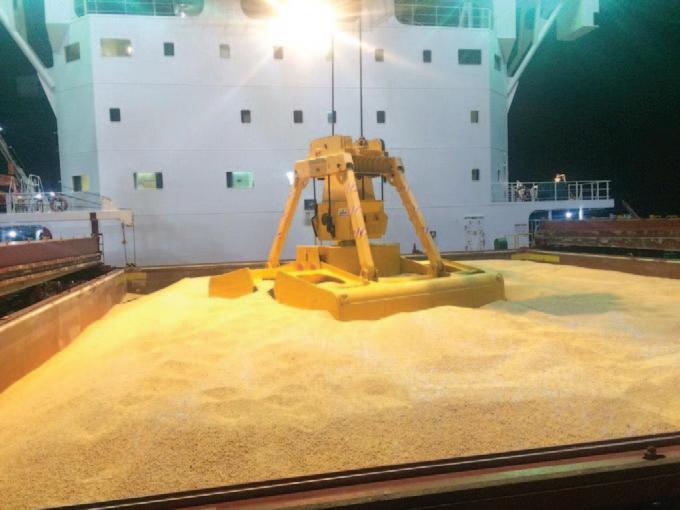
China’s rising feed demand for livestock is expected to increase coarse grain imports by 7mt to 39mt in 2023/24; wheat imports are forecast 2mt lower at 11mt.
TRADE IN COARSE GRAINS RISES IN 2023/24
Due to a substantial fall in corn, barley and sorghum prices due to increased output, global trade in coarse grains is expected to rise by 13mt to 234mt in 2023/24. Lower trade is forecast for wheat 210mt and oilseeds 196mt.
Global Wheat Stocks At Lowest Level In Eight Years
Global wheat stocks are lower at 259mt, while coarse grain stocks rise by 12mt to 340mt and oilseeds stocks by 14mt to136mt.
Extreme Weather Dents Wheat Output In Major Exporters
Despite extreme weather conditions occurring this season a mix of searing heat, drought, typhoons and floods, the global wheat harvest in 2023/24 is provisionally pegged by USDA at 787mt, 4mt below last year with larger wheat crops forecast for India, Argentina, Ukraine, the US and Turkey. Given, the extreme weather conditions experienced suggests global wheat output likely to be revised lower especially in major exporting countries.
Drought In Key Wheat Producers
In the northern hemisphere winter and spring wheat harvesting is wrapping up under mixed conditions with drought in several areas. El Niño has exacerbated drought in key wheat producing regions in the EU, US and Canada. StatCan confirmed, that despite a big increase in the planted acreage, Canada’s Spring wheat crop, would fall by 4mt to 22.1mt (all wheat 29.5mt) after a hot, dry summer diminished yields.

In the southern hemisphere, there are expanding dry concerns in Argentina and Australia. Prices are likely to rise towards the end of the year as focus shifts to harvests in countries such as Argentina and Australia where dry weather has hit yields, and reduced supply; this should support a rise in wheat prices towards the end of the year according to Dennis Voznesenski Rabbobank.

The most-active wheat contract on the Chicago Board of Trade (CBOT) closed up at $5.89/bu (19/09/23).
ARGENTINA’S WHEAT HARVEST REVISED LOWER
A shift from dry to wet conditions (due to the influence of El Niño) in Argentina is expected to cause a rebound in wheat production in 2023/24. Sowing progressed under mixed conditions as soil moisture starts to recover. The wheat harvest for 2023/24 is forecast at 15.6mt but according to the Rosario Grains Exchange this is likely to be 15mt — while abundant rainfall has fallen in the centre and east of the country, the same is not the case for western and northern areas, that are under drought conditions.
SEARING HEAT REDUCES AUSTRALIA’S WHEAT CROP
Australia’s ABARES forecast a muchreduced wheat crop of 25.4mt due to searing heat in some key producing Australian states.
Poor harvests in major exporting countries further tightening global supplies for wheat. Australia is a key supplier to buyers such as China, Indonesia and Japan, but a strengthening of the El Niño weather event suggests more dry weather is likely after the warmest winter on record. Ole Houe, of agricultural brokerage IKON Commodities said, “Compared to last year, the crop’s going to be over 10 mt smaller.”
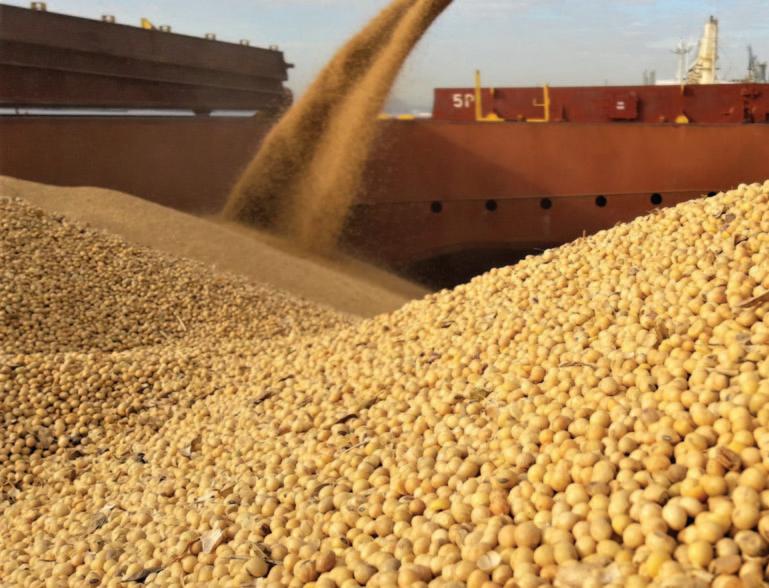
Feed Demand Small Increase For Wheat
Global feed demand for wheat is expected to rise by 2mt in 2023/24, due to higher feed wheat use in China, where record rainfall during the wheat harvest adversely affected grain quality. In South East Asia, feed wheat demand is lower in 2023/24 reflecting increased use of corn.
Abundant Black Sea Exports Pressures Prices
Prices remain pressured by abundant, competitively priced Black Sea exports. US wheat prices closed lower in September, as markets weighed efforts to renew the Black Sea Initiative, the prospect of tight global stocks due to drought versus hefty Russian wheat supplies. Since Moscow’s decision to quit the Black Sea grain export deal in mid-July, attacks on Ukraine’s export facilities have intensified. Ukraine has used routes to access the Danube ports. Romania is expected to approve a plan to upgrade road infrastructure in the Black Sea port of Constanta, increasing transit capacity to 4mt to assist Ukraine’s exports in the coming months.
Vietnam Improves Access For Russian Wheat
The Vietnamese agriculture ministry recently removed creeping thistle (Cirsium arvense) from its quarantine list. This decision removes the main obstacle preventing Russian grain from entering this growing market. Wheat imports projected to increase in Egypt 12mt, Iran 4.5mt, Morocco 6.5mt Indonesia 10mt and Philippines 6.5mt due to increased demand for feed and food/industry. The fall in shipments from Australia 22.5mt and Ukraine 11mt, outweighs exports from Argentina 10.5mt, EU 37.5mt and Russia 49mt with global trade in wheat 5mt lower at 210mt in 2023/24.
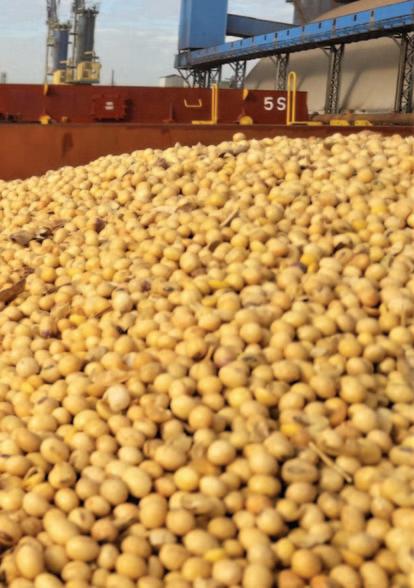
Some Buyers Opt For Direct Purchases
Despite increasing attacks by Russia on Ukrainian port infrastructure, the wheat market focused on plentiful supplies from Russia, reportedly trading wheat at cheaper levels privately, to what they offer in public tenders, in order to incentivize government-to-government deals. Egypt’s state buyer, the General Authority for Supply Commodities (GASC) bought c.480k mt of Russian wheat in a private sale from Solarisc $270mt C&F; followed by purchases of 120k French, 120k Romanian wheat at $249mt and $261mt FOB respectively; offers from Russia $270mt FOB. South Korea’s Nonghyup Feed Inc. (NOFI) purchased c.55,000/t feed wheat in a private deal, optional origin c.$273.90mt c&f plus a $1.50/t surcharge for additional port unloading, to arrive in South Korea 20th November.


WHEAT STOCKS DECLINE IN 2023/24
With demand for wheat outpacing supply, global stocks are drawn-down to 259mt (World 126mt, China 133mt), the lowest level in eight years; stocks in key major exporting countries falling to 54mt.
HUGE US CORN CROP ANTICIPATED IN 2023/24
Coarse grain output in 2023/24, weather permitting is expected to chalk up a near record harvest 1,497mt some 51mt up on last year. In the US, any increase/decrease in corn yields, expected to have less impact. Additional acres planted on new data from the Farm Service Agency increased total US corn plantings to 94.9m/acres, expected to compensate for yield loss.
RECORD OUTPUT FORECAST FOR COARSE GRAINS IN 2023/24
Global coarse grain output is forecast to rise by 51mt to 1.497bn/t in 2023/24. Mostly due to a huge increase in the US corn crop 384mt and expected recovery in Argentina. Larger crops are indicated for sorghum 62mt with smaller crops for barley142mt and oats 21mt. Higher corn production in Argentina and the US is expected to offset lower barley production in key exporting countries such
IGC/USDA * US, Argentina, Brazil, Russia, Ukraine, EU, Australia, Canada/red means check
IGC/USDA * Argentina, Brazil, Ukraine, US as Russia, the EU and Australia.
Middle East, North Africa, East Asia and South East Asia.
COARSE
Grain Demand To Rise
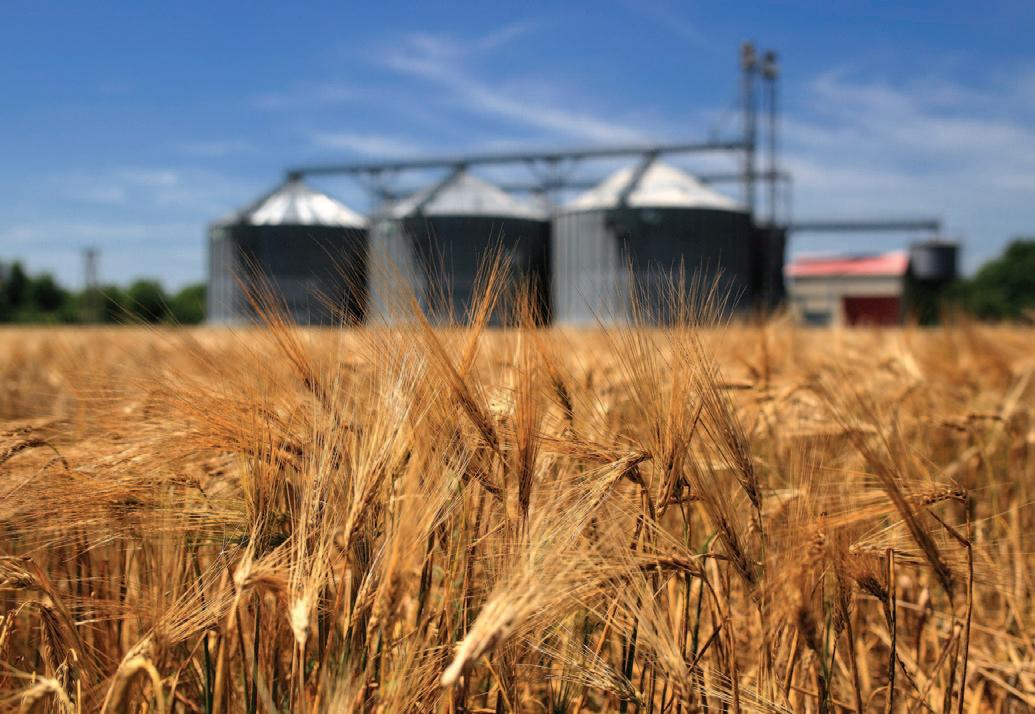
IN 2023/24
Global demand for feed, food/industry use of coarse grains, is set to rise by 29mt to 1.485bn/t in 2023/24. This includes feed use increased by 23mt to 915mt and a 9mt increase in food/industry use to 572mt. Increased use in North and South America,
COARSE GRAIN TRADE 234MT
Coarse grain exports are forecast at 234mt in 2023/24 an increase of 13mt on last year.
LARGE SUPPLIES DRIVE DOWN FEED PRICES IN 2023/24
Global corn output is forecast to rise by
59mt to 1.21bn/t in 2023/24 buoyed by a huge US crop of c.384mt, EU 59mt, Ukraine 28mt, China 277mt. With demand increasing to 1.2bn/t, higher feed use is set to rise by 26mt to 756mt due to falling prices, with non-feed use expected to rise by 8mt to 444mt. Growth in corn supply, to outpace the growth in demand, driving down world prices for feed, food/industry and ethanol production while incentivizing major corn producing countries such as US and Brazil towards greater industrial consumption.
Wet Weather Dents Corn In China
The prospect of a record US crop, will support higher feed use by the livestock sector and compensate for reduced pasture in the Midwest due to drought. Increased output in Canada and Ukraine more than offset lower crops in EU, Russia and China, where extreme wetness (excess rainfall and tropical storms) likely impacted some corn-producing regions. Official estimates point to a cut in production of
Source: USDA/*Meals cons/trade-excl. fishmeal **Argentina, Brazil, US
3mt; but an uptick in imports of corn and other coarse grains, suggests China is taking advantage of low grain prices to replenish stocks, increasing feed demand or, output is more affected?
Corn Imports Support Feed Use
China's corn imports are forecast to remain high in 2023/24 due to the large pig herd and strong consumer demand for meat, with imports needed to supplement insufficient domestic feed production. Historically, China has relied on the US and Ukraine for imports. However, given the ongoing war in Ukraine and until recently higher US corn prices, China has diversified into new markets, like Brazil.

SOUTH AMERICAN PRODUCTION PROSPECTS MIXED?
Evolving El Niño conditions are expected to increase prospects in Argentina-with corn production forecast at 54mt, exports 34mt in 2023/24, while possibly reducing production prospects in Brazil. Conab forecast Brazilian farmers will produce 129mt corn crop due to a larger planted area and higher yields. Brazilian farmers had harvested 93% of the area planted for their second corn crop in the centre-south region by early September. Producer margins for corn are positive, underpinned by agreements signed with China. Brazil’s exports are forecast at 59mt in 2023/24, given large supplies, favourable exchange rates, robust demand and improving logistics.
Major Exporter Bids For Corn Driven Higher
Global corn stocks are increased to 314mt in 2023/24 (World 112mt, China 202mt), including an increase in major exporters stocks. With plenty of Brazilian corn in the market, a record crop in the US, improved crop in the EU, pressured prices at major export ports which have fallen since last year by c.$60/t-$90mt. Brazil Feed (Paranagua) $227/t (Sept 19 ’23); Argentina
Feed (Up River) $241/t (Sept 19 ’23); US 3YC (Gulf) $233/t (Sept 13 ’23).
MODEST EXPANSION FOR MEAT TRADE IN 2023/24
The outlook for global meat trade remains relatively unchanged. Beef, chicken meat exports are similar, while pork is 2% higher since April. Brazil continues to make export gains and set new records for beef, pork, and chicken meat.
Higher beef prices, global production is revised up to 59.6mt. Drought induced herd liquidation in Argentina increased production; larger feedlot placements and higher cow slaughter are expected to boost US output; New Zealand production is raised as male dairy calves are marketed for beef.
Global pork production for 2023 is forecast at 114.8mt with increases for China, Canada and Brazil offset by reduced output in the EU, Japan, the Philippines, and Mexico. Despite mostly negative margins industry-wide, China’s output is raised as producers reduce herds to maintain cash flow. EU production is pressured by environmental regulation, weak consumption and higher feed costs; production in the Philippines is stymied due to the expansion of African Swine Fever (ASF). Strong demand in China, supports increased global pork exports of 10.8mt in 2023 — while reduced pork supplies from Canada, UK, EU, gift opportunities to the US and Brazil, to supply several Asian markets like South Korea and the Philippines.
Chicken meat output has increased to 103.5mt, on a continued outlook for improved feed prices and no major outbreaks of highly pathogenic avian influenza (HPAI) in Brazil, EU and China. Chicken meat exports are slightly higher at 13.8mt, Brazil 4.8mt, Thailand 1.1mt.
GLOBAL BARLEY CROP REDUCED TO 142MT IN 2023/24
This is driven by reduced area planted and weaker yield potential across major producing areas including the EU, Russia, Ukraine and Australia more than offsetting higher production in Argentina, where good yields are expected to improve outturn. The global barley crop is forecast at 142mt, 10mt lower in 2023/24. Feed use is forecast lower at 98mt, with a small increase in food/industry 46mt.
China Removes Duties On Australian Barley

Global trade is 3mt lower at 27mt with exports increased to Algeria, Jordan, Morocco and Tunisia. This year, with a smaller global barley harvest China is expected to import 7.5mt of barley along with other coarse grains, removing the duties imposed on Australian barley in place for some years. Australian export prices jumped 8% to $255mt as other importers like Saudi Arabia and Thailand compete for supplies. By contrast French and Argentine barley prices are c.$238mt and $235mt respectively.
SORGHUM OUTPUT TO RISE IN 2023/24
Global sorghum output is expected to rise to near record 62mt in 2023/24, the increase mostly due to a large US crop of almost 10mt, with better crops in Argentina and Brazil. Global sorghum exports are forecast at 10.2mt. China is the largest market importing 8.5mt. With domestic feed costs increasing in China, imports of sorghum from the US are driven by demand for the pig, poultry feed sectors and for baijiu (a national spirit beverage) made by fermenting cooked sorghum. Major sorghum exporters include the US 6.5mt, Argentina 1.8mt and Australia 1.7mt. Sorghum values, like other coarse grains have fallen-FOB Texas $245.36 (11 Sept ‘23).
Extreme Heat Dents Outlook For Us Beans
USDA data showed the weekly condition ratings for US soybean crops declined this past week (Sept 11), hovering at their lowest levels in a decade as dry conditions expanded, with crop estimates likely subject to further downgrades.
GLOBAL SOYBEAN OUTPUT TO RISE TO 401MT IN 2023/24
With an increase in the planted area, global oilseed production underpinned by demand for food, feed and renewable biofuels is expected to rise by 31mt to 661mt in 2023/24. The huge global oilseed crop if realized will cap price gains. USDA forecast the global soybean crop to rise to 401mt; this includes a huge soybean crop in Brazil 163mt, Argentina 48mt, Paraguay 10mt, with a smaller US crop 112mt. Some analysts suggest the downgrade for the US crop may be premature and the final US soy output likely to be higher c.121mt/122mt.
Despite lower rainfall in Brazil’s northern and central regions, production in the south, being responsible for around half of Brazil’s soybean output is expected to offset any production shortfall from these regions. Elsewhere, better crops are also anticipated for palm kernel 20.5mt, groundnut 50.7mt, sunflower seed 55.8mt and copra, partially offset by smaller rapeseed and cottonseed crops.
RISING CONSUMPTION MEAL , OIL AND SEEDS IN 2023/24
Consumption of meals expected to rise by 9mt to 356mt. With crush profitable and soybean oil in demand for food and biofuels, the US soybean market is anticipated to move sharply higher on a lower yield, despite reduced crush output in August. The crush industry’s recent capacity expansion, the adverse Midwest heat wave and hurricane disrupted transportation in the southeast, made estimating the August crush more difficult. “When you’ve had margins over $2/bu and you’re cranking out profits, going into the next harvest you have to throttle back to get ready,” said Don Roose, president of US. Commodities. “I expect it to bounce back pretty soon.”
CHINA TO IMPORT 104MT SOYBEANS IN 2023/24
Global trade in oilseeds to fall by 5mt to 196mt. US soybean exports are lower as Brazil’s large crops overshadow the market. Similarly, rapeseed exports from Canada are also lower. China is projected to remain the world’s largest soybean buyer with increased imports forecast at 104mt, to support the livestock industry, buying more from Brazil and less from the US, as new US soy crop prices have risen on lower supply expectations. DCi

